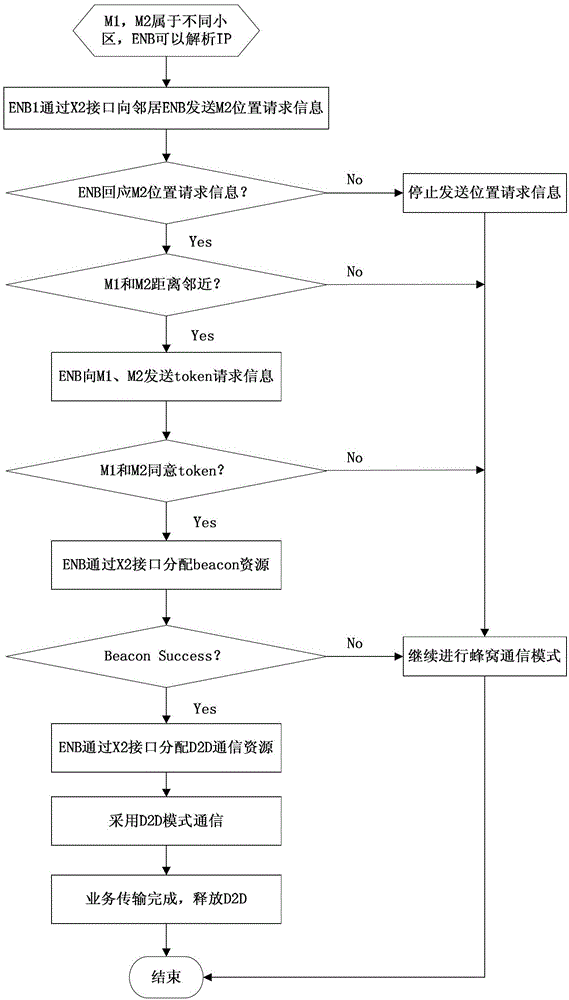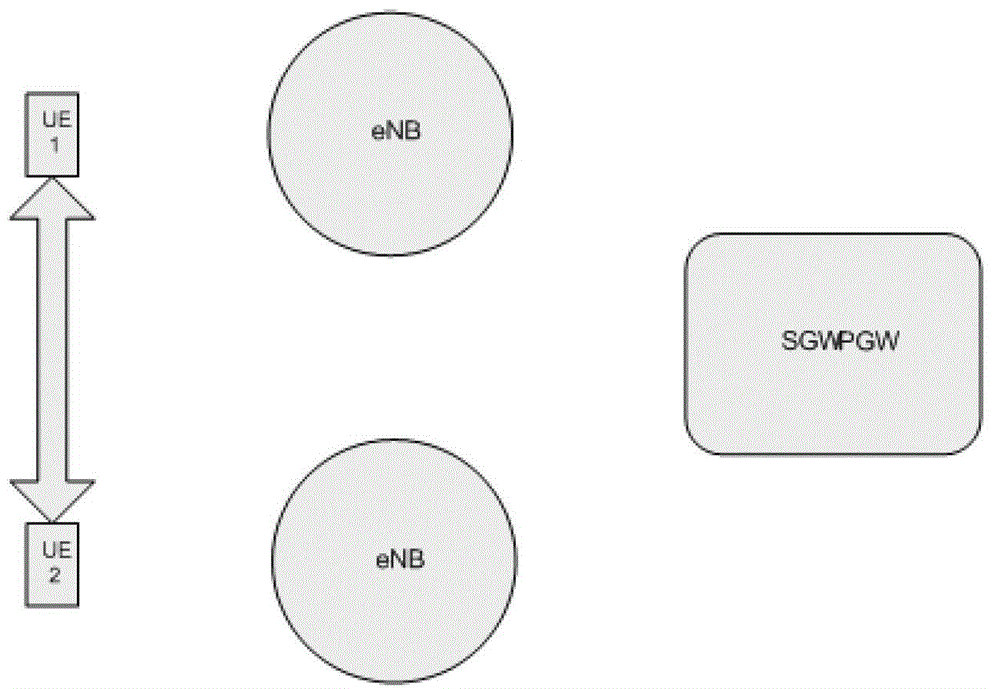Method for completing d2d communication in different cells by using signaling interaction of x2 interface
A communication method and signaling interaction technology, which are applied in the field of network communication to achieve the effects of increasing data transmission rate, increasing network throughput, and reducing transmission time and waiting time.
- Summary
- Abstract
- Description
- Claims
- Application Information
AI Technical Summary
Problems solved by technology
Method used
Image
Examples
Embodiment Construction
[0070] The present invention will be described in further detail below in conjunction with the accompanying drawings.
[0071] Such as figure 2 Shown, the concrete steps of the present invention are as follows:
[0072] There are at least one pair of first user equipment and second user equipment in different cells, and a first base station and a second base station in different cells:
[0073] (1) The first user equipment communicates with the second user equipment in a cellular mode; wherein
[0074] (1a) When the first base station detects that the signal-to-noise ratio of the first user equipment is not ideal, obtain the location information of the first user equipment through a network-assisted method;
[0075] (1b) The first base station broadcasts the location information request of the second user equipment to the neighbor base station through the X2 interface, and the first base station starts a response time while sending the message;
[0076] (1c) within the res...
PUM
 Login to View More
Login to View More Abstract
Description
Claims
Application Information
 Login to View More
Login to View More - R&D
- Intellectual Property
- Life Sciences
- Materials
- Tech Scout
- Unparalleled Data Quality
- Higher Quality Content
- 60% Fewer Hallucinations
Browse by: Latest US Patents, China's latest patents, Technical Efficacy Thesaurus, Application Domain, Technology Topic, Popular Technical Reports.
© 2025 PatSnap. All rights reserved.Legal|Privacy policy|Modern Slavery Act Transparency Statement|Sitemap|About US| Contact US: help@patsnap.com



